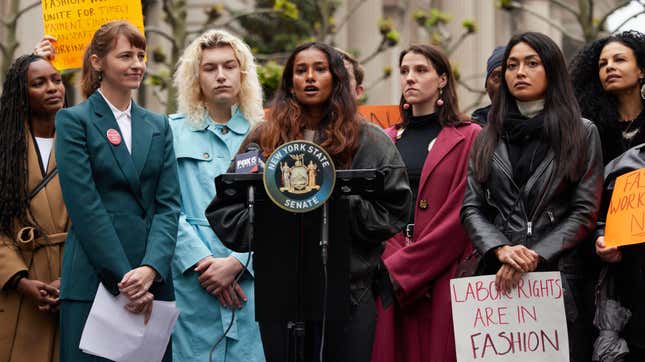More Models Come Forward With Disturbing Claims of Sex and Labor Trafficking
Fashion workers are detailing stories of abuse, being pimped out to predatory men like Donald Trump and Harvey Weinstein, and going unpaid for months.
BeautyStyle

The fashion industry has long been regarded as a predatory environment for young people, but the latest revelations paint an even more disturbing picture of the horrors some models endured in the last decade.
An explosive new report in Variety Tuesday features the stories of more than a dozen models and other related workers who say the modeling agencies who represented them helped ceate a culture ripe for financial and sexual exploitation. It’s common knowledge that models have always been held to unattainable body standards, but some of the details these people provided are far worse than previously imagined.
Esmeralda Seay-Reynolds, Variety reports, was 15 years old when she was scouted by the New York agency Click Model Management. She was 5-foot-11 and 130 pounds, but was told she looked “too mature,” otherwise known as “too heavy” in the fashion industry, because she’d developed curves like any other teenager. After dropping 20 pounds, Seay-Reynolds was signed by NEXT, a household agency that currently manages talent including Alexa Chung, Billie Eilish, and Lana Del Rey.
When Seay-Reynolds was 16, she shot with a photographer who had been publicly accused of sexual coercion. She says she once received $130 for a total of six weeks of work, and was later forced to climb a glacier in high heels before getting naked in freezing weather—a gig she says she was never paid for. And despite already losing weight, Seay-Reynolds was encouraged to stave off her hunger by chewing cotton balls. “I remember my agent saying, ‘Cotton balls are organic, so it’s fine if you just swallow them to make yourself feel full.’”
-

-

-

-

-

-

-

-

-

-

-

-

-

-

-

-

-

-

-

-

-

-

-

-

-

-

-

-

-

-

-

-

-

-

-

-

-

-

-

-








































